Footbridges can be equally stunning and awe-inspiring as their ‘elder brothers’ – road and rail bridges. As bridges intended for pedestrians and cyclists are generally narrower and less costly to construct, this allows architects and engineers to push boundaries of imagination. They conceive dramatic and beautifully designed structures that interact with the surrounding landscape, serving not solely for transporting people but acting as sculptural works of art.
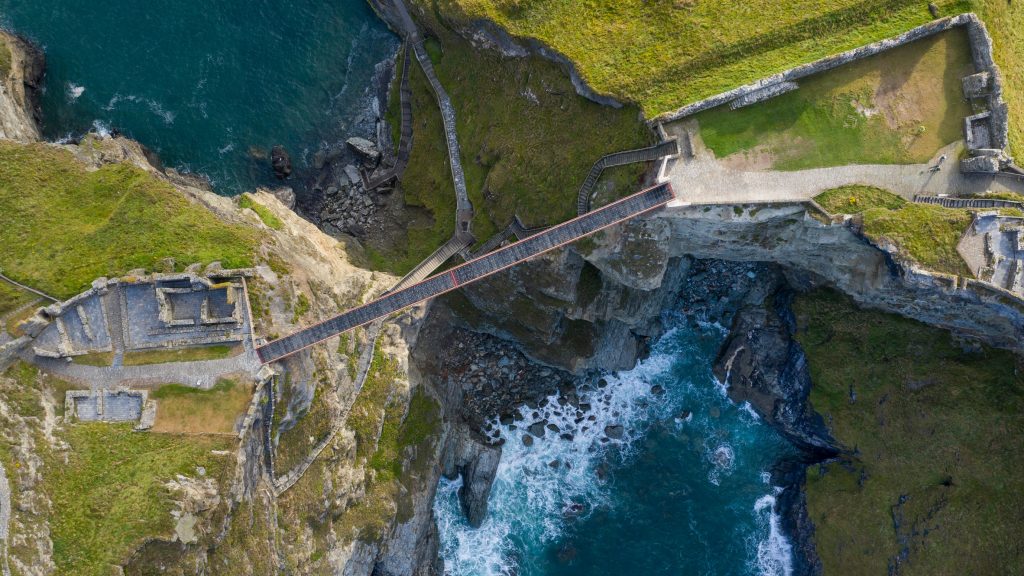

Exploded View bridge by Paul Cocksedge
British designer Paul Cocksedge has designed the Exploded View bridge, a CLT footbridge to span the Liesbeek River in Cape Town, South Africa. Though the bridge is a relatively simple visual gesture, it aims to address important issues around environment.

Exploded View bridge by Paul Cocksedge
Cocksedge has chosen eucalyptus as the main material for the structure to show its potential for building. Eucalyptus trees were introduced to South Africa in the 19th century for shade and shelter but being an invasive species for the local ecosystem, they started causing environmental problems. Originating from Australia, they require more water than other species, which is particularly challenging in the conditions of water South Africa’s shortage.

Exploded View bridge by Paul Cocksedge
The eucalyptus wood is transformed into cross-laminated timber (CLT) by layering it and gluing the layers together. It is the layering that makes the material strong enough to be a sustainable alternative to steel and concrete.

Exploded View bridge by Paul Cocksedge
The Exploded View is set to be built within the Upper Liesbeek River Garden as a permanent river crossing. The lengths of the CLT beams forming the bridge will be staggered to create various types of ledges and seats to offer the pedestrians resting areas.
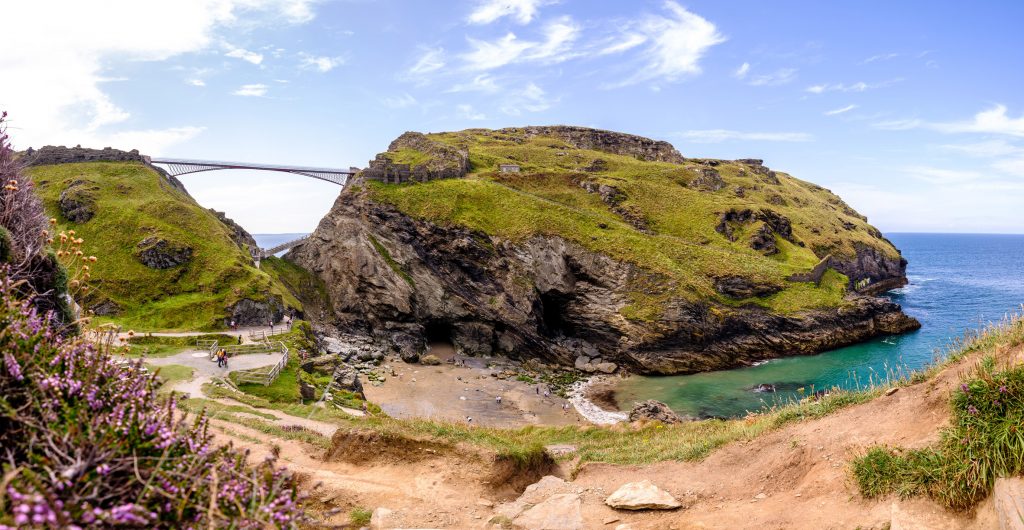
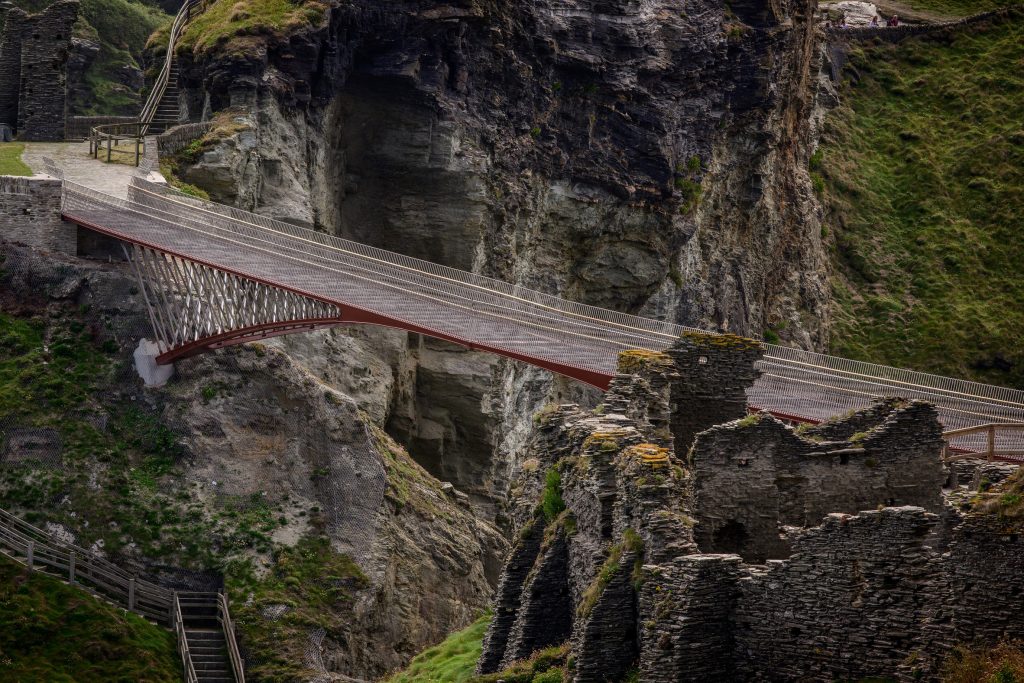
Tintagel Footbridge by William Matthews Associates (also header image)
London-based architecture studio William Matthews Associates collaborated with engineers Ney&Partners to develop their winning proposal for a new footbridge linking the remains of Tintagel Castle in Cornwall, selected from 137 international entries.
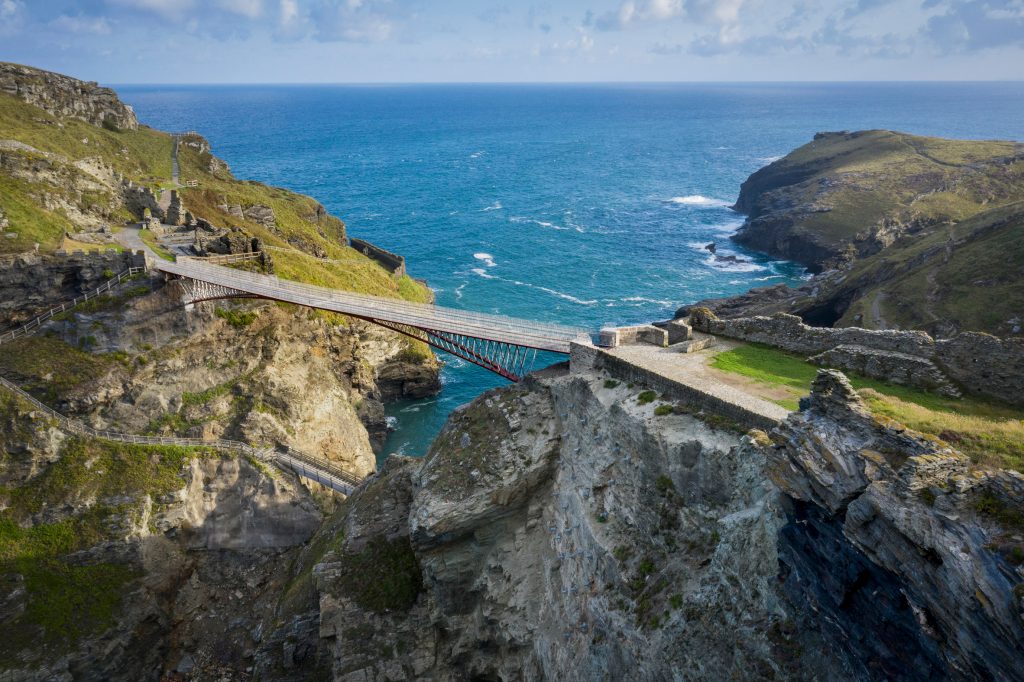
Tintagel Footbridge by William Matthews Associates
The team aimed to recreate the link that once existed and filled the current void between the two cliffs connecting two sides of the medieval castle where King Arthur had been conceived according to legend. Instead of introducing a third element that spans from side to side, they suggested two independent 30 metre long cantilevers that reach out and touch, almost, in the middle. The 40 mm gap allows the bridge to expand and contract with the changing temperature, while the absence of material is also used as something fun for people when they cross the footbridge.

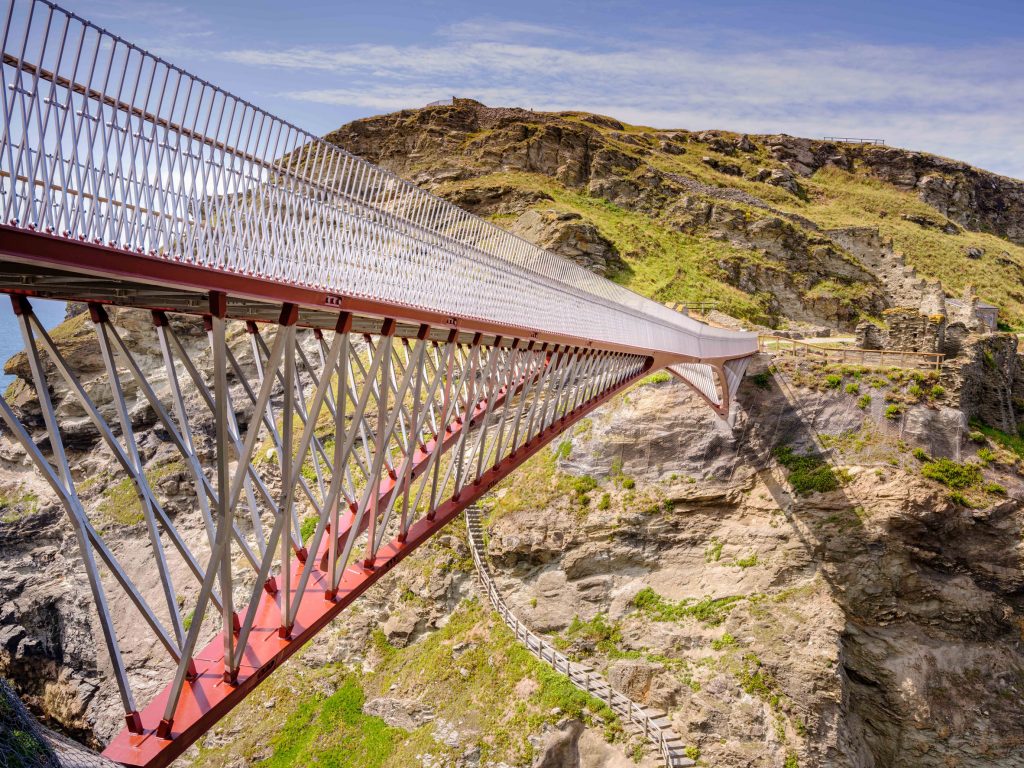
Tintagel Footbridge by William Matthews Associates
Construction began in late 2018 and was completed in the summer of 2019. The two cantilevers were made of steel in Devon over the period of a year and transported to Cornwall in five-tonne pieces. The bridge took two weeks to assemble in situ with the help of a special cable crane that was used to position each section into place.
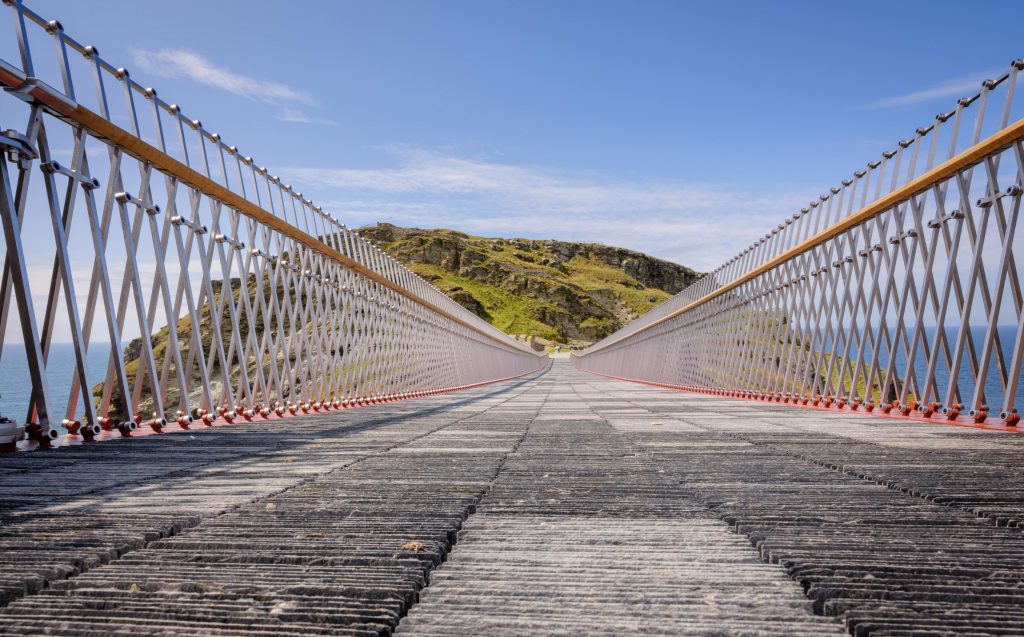
Tintagel Footbridge by William Matthews Associates
Local slate from the Delabole quarry – England’s oldest working quarry – is aligned vertically for the pathway, while the bridge’s handrails are made of oak.

Dubai Creek Footbridge by IJP Architects and AKT IIThe design proposal by London-based IJP Architects and engineers AKT II has won a competition for a footbridge to be built over the man-made canal beside Santiago Calatrava’s Dubai Creek Tower in the UAE held by UAE Real estate company Emaar.
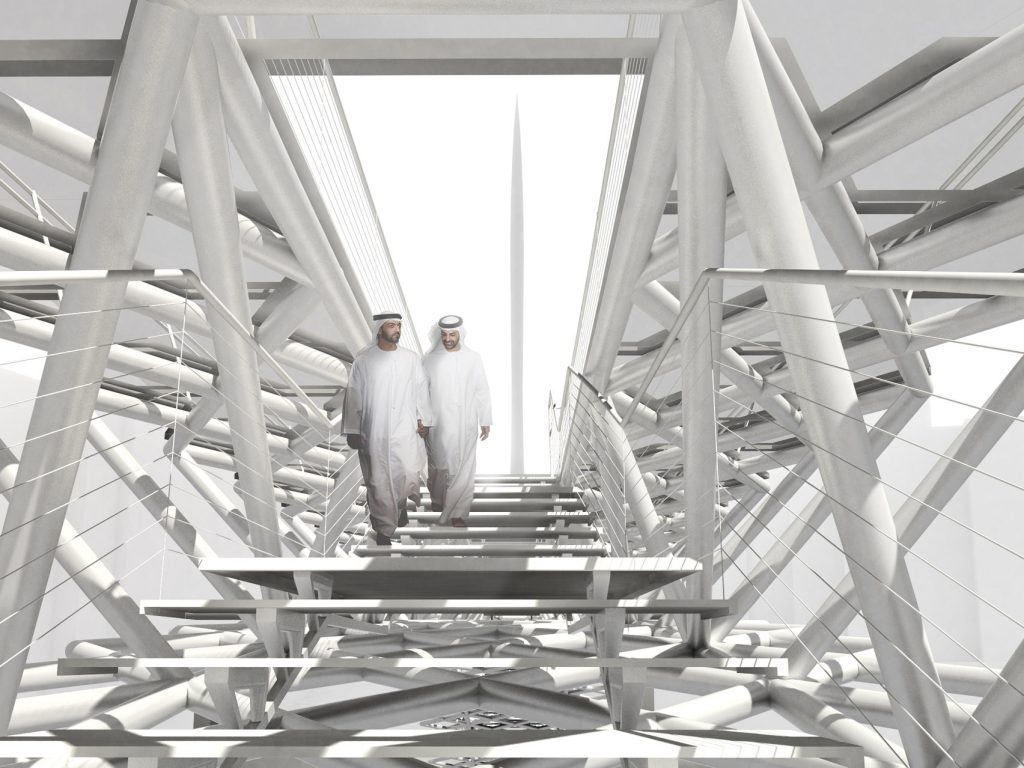
Dubai Creek Footbridge by IJP Architects and AKT II
Named Dubai Creek Footbridge, the two-storey truss arch structure was conceived to be as light and slender as possible, in order to complement the design of Dubai Creek Tower rather than distract from it. According to the team, the bridge is designed fully around the gradual discovery of its towering neighbor, the emergence of the public stair onto the upper deck serving as a camera aperture framing its subject.
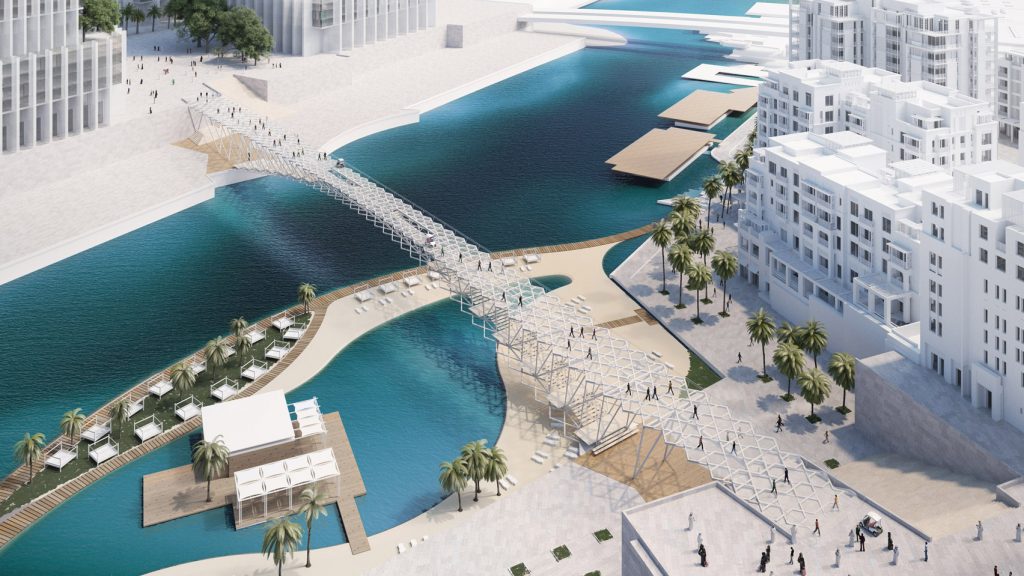
Dubai Creek Footbridge by IJP Architects and AKT II
The truss arch of strength steel is engineered to minimize the size of all its exposed structural members as far as possible, and ensure that the bridge has a slender aesthetic. Its decorative steel lattice is reminiscent of traditional Islamic geometric patterns – mashrabiyas – and ornamented vaulted ceilings called muqarnas. This combination of traditional architecture and a contemporary steel structure expresses the continuity between the cultural past and present of Dubai.
The upper level of the bridge is intended for cyclists and golf carts, while the shady lower deck will be used for pedestrians, providing views of the surrounding city and also Dubai Creek Tower on both levels.